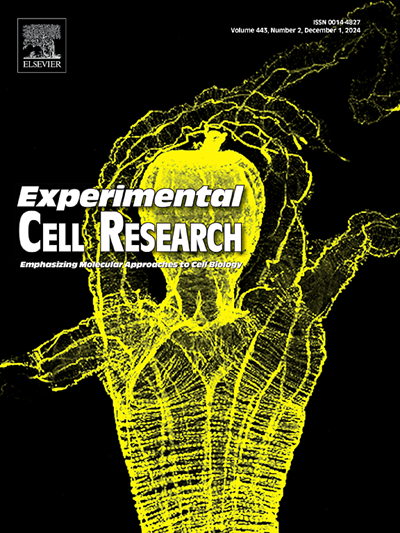Mapping the initial effects of carcinogen-induced oncogenic transformation in the mouse bladder
IF 3.3
3区 生物学
Q3 CELL BIOLOGY
引用次数: 0
Abstract
Characterizing the initial stages of oncogenic transformation allows the identification of tumor-promoting processes before the inherent clonal selection of the aggressive clones. Here, we used global proteomics, genetic cell tracing, and immunofluorescence to dynamically map the very early stages of cancer initiation in a mouse model of bladder cancer. We observed a very rapid and incremental proteome dysregulation, with changes in the energy metabolism, proliferation and immune signatures dominating the landscape. The changes in the lipid metabolism were immediate and defined by an increase fatty acid metabolism and lipid transport, followed by the activation of the immune landscape. Alongside the changes in the immune signature and lipid metabolism, we also mapped a clear increase in the cell cycle-related pathways and proliferation. Proliferation was mainly restricted to the basal epithelial layer rapidly leading to urothelium thickening, despite the progressive loss of the superficial layer. Moreover, we observed a tilt in the energy balance towards increased glucose metabolism, probably characterizing cells of the tumor microenvironment. All of the observed proteome signature changes were persistent, being retained and sometimes intensified or diversified along the timeline. The signatures observed in this pilot suggest these processes as potentially targetable drivers of the future neoplastic transformations in the bladder.
绘制小鼠膀胱中致癌物质诱导的致癌转化的初始效应图
表征癌性转化的初始阶段允许在侵袭性克隆的固有克隆选择之前识别肿瘤促进过程。在这里,我们使用全局蛋白质组学,遗传细胞追踪和免疫荧光来动态绘制膀胱癌小鼠模型的早期癌症起始阶段。我们观察到一个非常快速和增量的蛋白质组失调,与能量代谢,增殖和免疫特征的变化主导景观。脂质代谢的变化是直接的,由脂肪酸代谢和脂质转运的增加所定义,随后是免疫景观的激活。除了免疫特征和脂质代谢的变化外,我们还绘制了细胞周期相关途径和增殖的明显增加。增殖主要局限于基底上皮,迅速导致尿路上皮增厚,尽管浅层逐渐丧失。此外,我们观察到能量平衡倾向于增加葡萄糖代谢,这可能是肿瘤微环境细胞的特征。所有观察到的蛋白质组特征变化都是持久的,沿着时间轴保留,有时会增强或多样化。在该试验中观察到的特征表明,这些过程可能是膀胱未来肿瘤转化的潜在目标驱动因素。
本文章由计算机程序翻译,如有差异,请以英文原文为准。
求助全文
约1分钟内获得全文
求助全文
来源期刊

Experimental cell research
医学-细胞生物学
CiteScore
7.20
自引率
0.00%
发文量
295
审稿时长
30 days
期刊介绍:
Our scope includes but is not limited to areas such as: Chromosome biology; Chromatin and epigenetics; DNA repair; Gene regulation; Nuclear import-export; RNA processing; Non-coding RNAs; Organelle biology; The cytoskeleton; Intracellular trafficking; Cell-cell and cell-matrix interactions; Cell motility and migration; Cell proliferation; Cellular differentiation; Signal transduction; Programmed cell death.
 求助内容:
求助内容: 应助结果提醒方式:
应助结果提醒方式:


